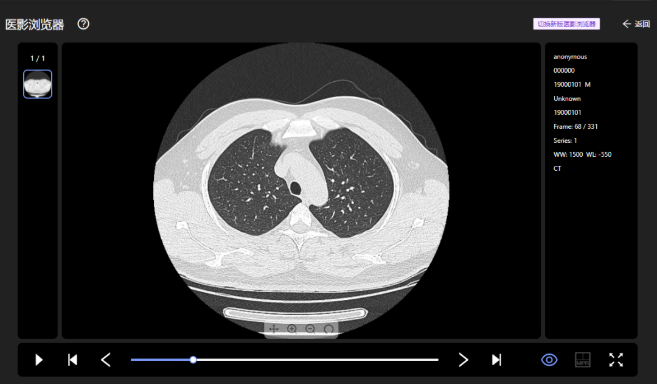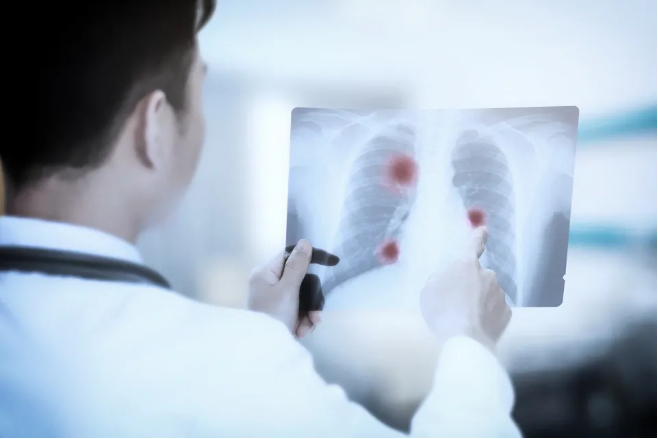Are lung nodules prone to cancer?
- Normal Liver Cells Found to Promote Cancer Metastasis to the Liver
- Nearly 80% Complete Remission: Breakthrough in ADC Anti-Tumor Treatment
- Vaccination Against Common Diseases May Prevent Dementia!
- New Alzheimer’s Disease (AD) Diagnosis and Staging Criteria
- Breakthrough in Alzheimer’s Disease: New Nasal Spray Halts Cognitive Decline by Targeting Toxic Protein
- Can the Tap Water at the Paris Olympics be Drunk Directly?
Are lung nodules prone to cancer?
Are lung nodules prone to cancer? These groups of people are “candidates” for lung cancer.
In life, many people think that a lung nodule is a “harbinger of lung cancer”, and having a lung nodule means that lung cancer is coming. is this real? In fact, lung nodules are just a kind of precancerous lesions, which may develop into lung cancer! But different types of lung nodules have different cancer risks.
Therefore, getting a lung nodule does not necessarily mean that it will develop into lung cancer! So what kind of lung nodules have the highest risk of cancer?
How to judge the cancer risk of lung nodules?

1. View form
Viewing the shape is mainly to observe the shape, density, size and blood supply of the lung nodules! Generally speaking, the poorer the surface flatness of the lung nodule, the more uneven the density, the larger the diameter, and the richer the blood supply, the higher the risk of canceration. Conversely, the smoother the surface, the more uniform the density, the smaller the diameter, and the worse the surrounding blood supply, the lower the risk of canceration!
2. Look at the ingredients
According to the density, lung nodules can be divided into pure ground glass density nodules, some solid nodules and solid nodules.
According to the nature, lung nodules can be divided into benign nodules and malignant nodules. Benign nodules such as inflammation, local hemorrhage, tuberculosis, fibrosis, etc., while malignant nodules are tumors.
According to the morphology of the nodules, it can be divided into partial solid nodules, ground glass nodules and solid nodules, and the cancer rate gradually decreases from high. The solid nodules have smooth edges, uniform density, and the least chance of malignant transformation.
3. Look at the size
Among all lung nodules, the probability of malignant transformation of nodules greater than or equal to 3 cm is as high as 80%; the probability of malignant transformation of nodules between 2-3 cm in size is greater than 40%; 80% of lung nodules are less than or equal to 1 Cm, and 80%-90% of such small lung nodules are benign.
Therefore, after a physical examination finds a lung nodule, what is most needed is to go to the hospital in time to prevent the size of the nodule from changing and causing malignant changes!
4. Positioning
The location of lung nodules often occurs in the upper lobe of the lung. Studies have found that most persistent lung nodules are located in the upper lobe of the lung, especially the right upper lobe. This may be related to smoking. For example, the nodules just grow near the trachea. Symptoms such as coughing may also occur.
Who are the high-risk groups of lung nodules?

- 1. People over 40 years old, and there are slightly more women than men.
- 2. People who smoke for a long time, especially those who have been smoking for more than 20 years and smoke at least one pack of cigarettes a day.
- 3. People who have been exposed to chemical pollutants for a long time, such as industrial dust or some radioactive materials.
- 4. People with chronic lung diseases, such as tuberculosis, chronic obstructive pulmonary disease, etc.
- 5. People with lung cancer or a family history of cancer have a relatively higher probability of developing lung nodules.
High-risk groups should have regular physical examinations to find early disease in time. For high-risk groups with a history of smoking, basic lung disease or family history of tumors, low-dose spiral CT physical examinations should be done annually.
The cancer risk of lung nodules is only an assessment of the probability of lung cancer, and cannot be used as a basis for lung cancer! Therefore, regardless of the risk of cancer, patients with lung nodules should be vigilant and adopt standardized treatment in time to avoid serious consequences!
(source:internet, reference only)
Disclaimer of medicaltrend.org



